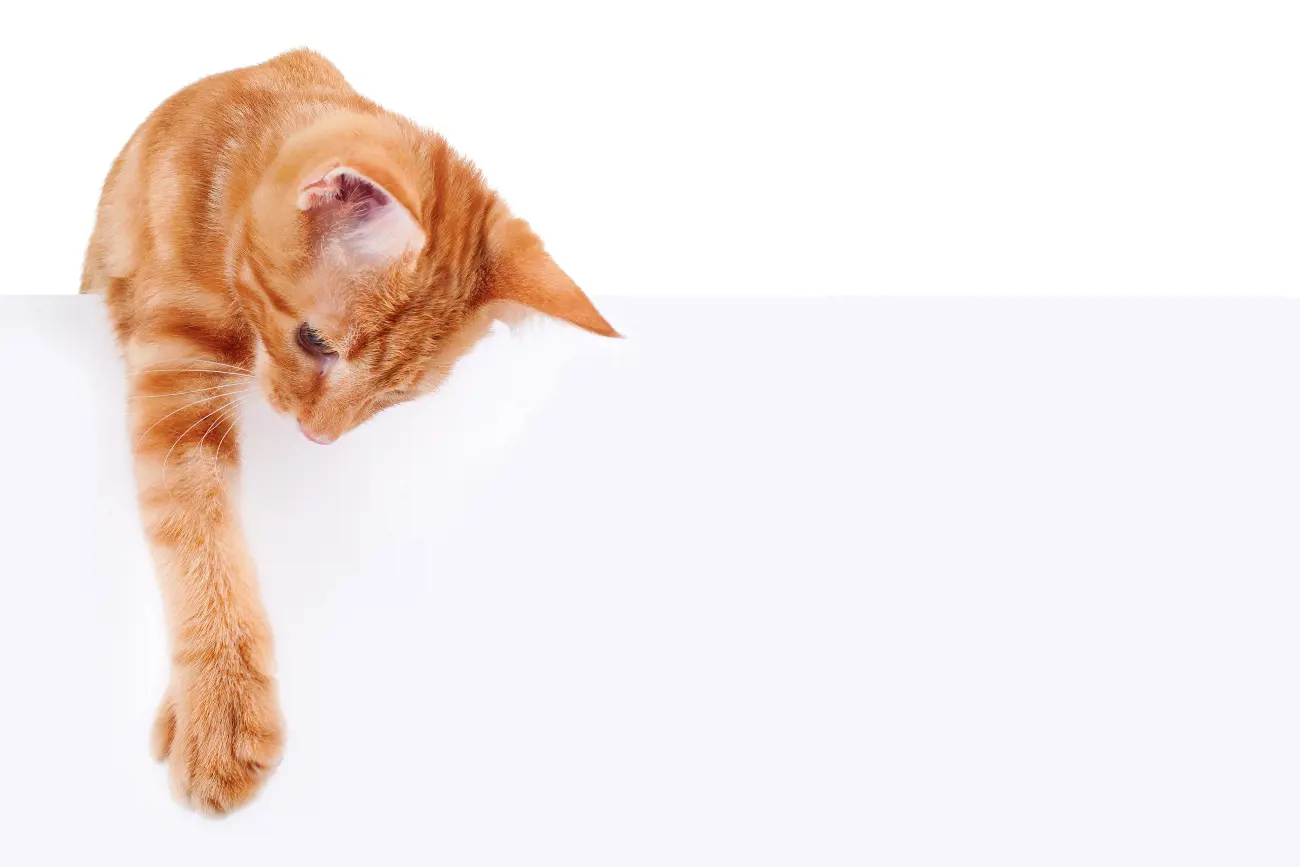Why are cat paw pads different colours?
7th February, 2024

The colours of cat paw pads are determined by a combination of genetics, melanin and pigmentation, temperature, environmental factors, breed variations, age, and health conditions.
These factors contribute to the unique and diverse palette of paw pad colours that we see in cats. From the velvety black pads of a panther to the delicate pink pads of a Siamese, their multicoloured paw pads add to the beauty and intrigue of our feline furry friends.
Evolution
Evolutionary advantages play a part in the diversity of paw pad colours. Cats with darker paw pads have a higher concentration of melanin, the pigment responsible for producing darker colours. This increased melanin provides better protection against harmful UV rays and reduces the risk of sunburn.
In contrast, cats with lighter paw pads have less melanin, which allows for easier detection of wounds or injuries. This trait can be advantageous as it helps owners notice any issues with their cat's paws more quickly, leading to prompt medical attention if needed.
Temperature
Your cat's paw pad colour can be influenced by temperature. The role of sweat glands in paw pad colouration and camouflage is essential to understand this phenomenon. Cats sweat glands in their paws help regulate their body temperature. These glands produce sweat, which evaporates and cools the paw pads, preventing them from overheating.
As a result, the temperature of the environment can affect the colour of the paw pads. When it's hot, the blood vessels in grey pads can dilate, causing the paw pads to appear pinker or redder. This increased blood flow helps dissipate heat more efficiently.
Conversely, in colder temperatures, the blood vessels constrict, reducing blood flow to the paw pads and causing them to become paler. This helps minimise heat loss and maintain the cat's body temperature. Paw pad colour variation due to temperature is an evolutionary adaptation that allows cats to camouflage effectively in different environments.
Cat insurance considerations
As a cat person, you adore your feline friend and want to give them the best care possible. However, unexpected accidents or illnesses can strike at any moment, leading to hefty veterinary bills. This is where cat insurance comes in handy. It helps cover the cost of veterinary care, ensuring your beloved pet gets the treatment they need without causing a financial burden.
To get a cat insurance quote for your furry friend you can get a quote through our website by clicking here. If you would like to talk to one of our cat insurance team, you can get in touch with us on 0330 102 5748.
Environmental factors
Another important factor that contributes to the different colours of cat paw pads is the type of surface they frequently come into contact with. The environment a cat lives in can have a significant impact on the colour of its paw pads. Here are some key points to consider:
- Paw pad colour genetics: Just like fur colour, the colour of a cat's paw pads can be influenced by genetics. Certain genes can determine whether a cat will have black, pink, or even multicoloured paw pads.
- Surface materials: The type of surfaces a cat frequently walks on can cause wear and tear on the paw pads, which can affect their colour. Rough surfaces can lead to darker and thicker paw pads, while softer surfaces may result in lighter and more delicate pads.
Paw pad colouration can provide camouflage in certain environments, allowing cats to blend in and remain undetected by predators or prey. Additionally, paw pad colours may serve as visual cues for communication within a species.
Pigmentation
To understand the factors that contribute to the pigmentation of a cat's paw pads, you need to consider the role of age and the changes in paw pad colour that occur over time. Paw pad pigmentation is influenced by various factors, including genetic mutations and the evolution of paw pad colour. Here are four key factors to consider:
- Genetic mutations: Certain genetic mutations can affect the production of melanin, the pigment responsible for paw pad colour. These mutations can result in variations in pigmentation, leading to different colours in cat paw pads.
- Paw pad colour evolution: Over time, the colour of a cat's paw pads can change due to natural selection. Cats with paw pads that blend well with their environment may have increased survival chances, leading to the evolution of specific colours in different populations.
- Age-related changes: Just like humans, cats undergo age-related changes in their paw pads. As cats grow older, their paw pads may become darker or lighter in colour due to changes in melanin production.
- Health and environmental factors: Paw pad colour can also be influenced by the overall health of the cat and external factors such as exposure to sunlight or certain chemicals.
Understanding these factors can help shed light on the diverse colours of cat paw pads and the underlying mechanisms behind their pigmentation.
Paw pad colour in kittens
Cat owners may notice variations in the colour of their cat's nails and paw pads as they age. The colour of a cat's paw pads is determined by genetic inheritance and can vary greatly from cat to cat. Here are some important points to consider regarding paw pad colour patterns:
- Kittens typically have pink or light-coloured paw pads at birth.
- As kittens grow older, their paw pads may darken and develop pigmentation.
- Some cats have paw pads that remain pink throughout their lives, while others may have black, brown, or even multicoloured paw pads.
- Certain breeds, such as Siamese cats, are more likely to have dark-coloured paw pads due to their genetic makeup.
Understanding these paw pad colour variations can provide insights into a cat's age and genetic background. Now, let's explore how paw pad colour can be indicative of certain health conditions.
Health conditions

If your cat's paw pads are a different colour than usual, it could indicate a potential health condition. The colour of a cat's paw pads can vary due to several factors, including health conditions. While it is normal for paw pads to change colour slightly in response to temperature changes, persistent or drastic changes in colour may signal an underlying issue.
One common health condition that can affect paw pad colour is anaemia. Anaemia occurs when there is a decrease in the number of red blood cells or a decrease in the amount of haemoglobin in the blood. This can cause the paw pads to appear pale or white. Other health conditions that may cause changes in paw pad colour include liver disease, kidney disease, and certain types of infections.
If you have concerns of any changes in your cat's paw pad colour, it is best to consult with a veterinarian for a proper evaluation.
Mystery of multicoloured paw pads
To understand the mystery of multicoloured paw pads, take a closer look at the various hues and patterns that can adorn your furry friend cat's feet. The mystery of colouration in cat paw pads has long intrigued scientists and cat lovers alike. While some cats have paw pads that are uniformly pigmented, others have pads with striking patterns and multiple colours. This variation in colouration raises questions about the evolutionary significance behind these unique features.
To shed light on this mystery, scientists have proposed several theories:
- Genetic variation: Just like humans have different skin tones, cats may have genetic differences that lead to variations in paw pad colour. Certain genes could influence the production of pigments in the skin, resulting in different colours and patterns.
- Camouflage: Cats are natural hunters, and their paw pads come into direct contact with various surfaces. It is possible that the colouration of their paw pads helps them blend in with their surroundings, providing camouflage during hunting or hiding.
- Heat regulation: Paw pads play a crucial role in thermal regulation, helping cats dissipate heat. Different colours could reflect varying levels of heat absorption, allowing cats to adapt to different climates.
- Evolutionary advantage: The colouration of paw pads may have developed as a way for cats to communicate with each other or as a sign of fitness and health, indicating genetic superiority.
While the mystery of multicoloured paw pads continues to intrigue, further research is needed to fully understand the evolutionary significance behind these variations in colouration.
Frequently asked questions
Can the colour of a cat's paw pads change over time?
Yes, the colour of a cat's paw pads can change over time due to genetic factors. The variations in paw pad colour have evolutionary significance and can help with camouflage and heat regulation.
Do all cat breeds have the same colour paw pads?
Not all cat breeds have the same colour paw pads. The colour of a cat's paw pads can vary depending on their breed. Some cats have pink paw pads, while others have multi coloured pads with black, grey, or even spotted pads.
Can a cat's paw pad colour indicate their overall health?
The colour of a cat's paw pad can indicate their overall genetic health. Certain genetic conditions can cause abnormalities in paw pad colour. Additionally, diet can impact the pigmentation of paw pads.
Are there any environmental factors that can cause a cat's paw pads to change colour?
Environmental factors, such as exposure to sunlight excess heat, or certain chemicals, can cause a cat's paw pads to change colour. However, genetic factors are primarily responsible for determining the natural colour variation in cat paw pads.
Are multicoloured paw pads more common in certain cat breeds?
Multicoloured paw pads in cats can be more common in certain breeds due to genetic factors. Cat paw pad color and patterns are determined by genes that control pigmentation, leading to variations in colour and pattern.
What are cat toe beans for?
Cats are fascinating creatures, aren't they? And one of their most captivating features are those cute little toe beans. First and foremost, they act as shock absorbers. When a cat jumps or lands, these pads cushion the impact, protecting the bones and joints in the cat’s feet.
Interestingly, they also provide extra traction for climbing or running. The texture of these toe beans allows them to get a good grip on various surfaces, making them agile hunters and climbers.
Helpful Pages
Recent Posts
Pet Insurance Quote
- 98% claims paid *
- Claims paid directly to vets
- 24/7 vet video consultations
- Interest free monthly payments




